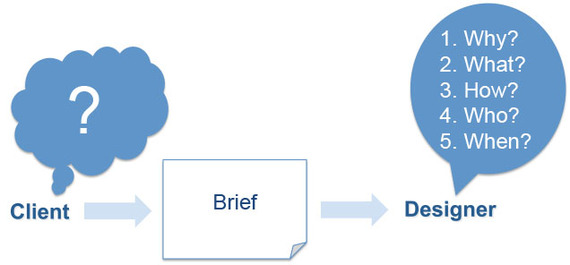Co-written by Michael Liedtke
The value added by a good design brief is vastly underrated. When asked from where he received his inspiration, Syd Mead, the brilliant design futurist and the brain behind the concept designs for the movies, Blade Runner, Aliens and Mission Impossible III, replied: "The client design brief!"
Based on our joint and rather extensive experience with design briefs, we have created a list of the top ten challenges and how best to address them:
1) Clients are unclear about what they want from design and, therefore, have no clue what the design team should achieve.
2) Clients over-rely on intuition and neglect to request and integrate designers' input in the brief development process.
3) Clients underestimate the value of design.
4) Clients feel they already know their customers and don't want to change what they already have.
5) Clients do not understand brand form language.
6) Clients have unreasonable expectations about a design upgrade of their product.
7) Clients do not understand the need to do design research and feel that one look at their product(s) should tell the designer all that is needed.
8) Clients feel that they know their customers better than anybody else and can tell the designer everything they will ever need to know about them.
9) Language and definition misunderstandings - Contemporary can mean many things to different people.
10) Business has been slowing down and the client thinks it might have something to do with their designs and finally ask the designer to do "something."
If one wants to do a minor facelift to an existing design, then a verbal description may suffice for designers to generate initial concepts. However, if one intends to engage in actual innovation, the Design Quantification Criteria (DQC), the strategy, context and execution will have to be well thought out and effectively communicated to the design team.
One of the biggest mistakes made by clients is that they believe they know their customers very well already. They might see true fans of their product at a trade show but never take the time to experience the true context for the product, which is the environment in which their product is used.
In some instances, the best briefs were not even written on a piece of paper, instead, they were experienced. Visionary clients want to make sure that the design team truly understands the context of their product. These intensive program introductions are not inexpensive, but the clear understanding by the entire design team of the task at hand, makes it comprehensive. This obviously is not feasible for every product or client; however, an example might be a designer living the life of a trucker for a few days in order to really understand the needs and desires of this user and overnighting in the very same sleeper cab that the designer is challenged to redesign. This is the experiential design brief in action.
So, how does one get the client to provide what is needed for the design team to get the best possible design brief for the program and budget at hand? It all comes back to communication. While there are numerous templates, most of them boil down to the four basic questions of why, what, how, who and when. These questions can assist in establishing the Design Quality Criteria so it is important to walk the client through this list of questions, even if the client might not at first understand the purpose or see the need for this exercise. Once it is explained, this detailed information exchange suddenly earns an air of value and the client begins to understand that these designers are a lot like engineers after all.
Just as the engineering department requires clear directions beyond the typical "better, faster, cheaper", the design team also needs their own set of established Quality Criteria design - to create an effective and efficient design brief.
Special thanks to Michael Liedtke for researching and co-writing this article.
